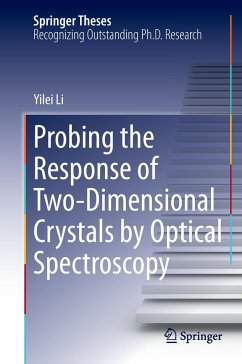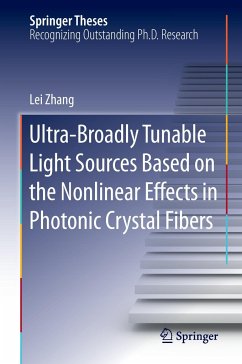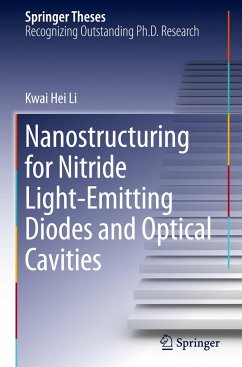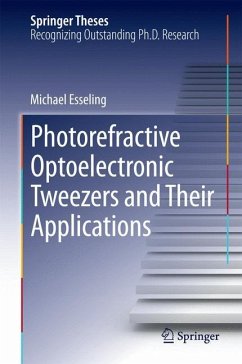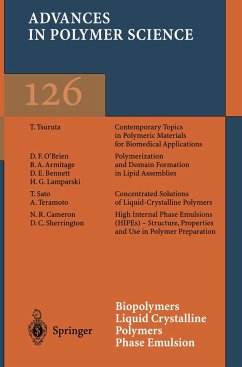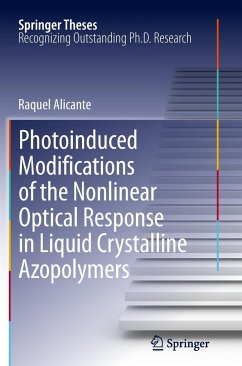
Photoinduced Modifications of the Nonlinear Optical Response in Liquid Crystalline Azopolymers
Versandkostenfrei!
Versandfertig in 6-10 Tagen
76,99 €
inkl. MwSt.
Weitere Ausgaben:

PAYBACK Punkte
38 °P sammeln!
Nonlinear optical (NLO) phenomena such as frequency conversion have played a key role in the development of photonic technologies. This thesis reports a detailed study of the molecular response of a large variety of push-pull organic compounds using the Second Harmonic Generation technique, which will serve as a starting point for the investigation at the macroscopic scale of azobenzene-based liquid crystalline polymeric films and their blends with highly efficient NLOchromophores. These materials are designed with the aim of exploiting their photoadressability in order to tailor their nonline...
Nonlinear optical (NLO) phenomena such as frequency conversion have played a key role in the development of photonic technologies. This thesis reports a detailed study of the molecular response of a large variety of push-pull organic compounds using the Second Harmonic Generation technique, which will serve as a starting point for the investigation at the macroscopic scale of azobenzene-based liquid crystalline polymeric films and their blends with highly efficient NLO
chromophores. These materials are designed with the aim of exploiting their photoadressability in order to tailor their nonlinear behaviour. The magnitude and symmetry of their NL response was successfully controlled via light irradiation and thermal treatments. Moreover, as a specific application, the recording of efficient NLO gratings was achieved.
chromophores. These materials are designed with the aim of exploiting their photoadressability in order to tailor their nonlinear behaviour. The magnitude and symmetry of their NL response was successfully controlled via light irradiation and thermal treatments. Moreover, as a specific application, the recording of efficient NLO gratings was achieved.




